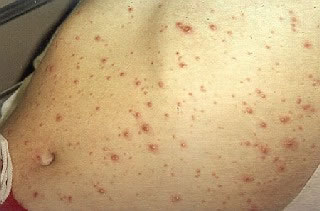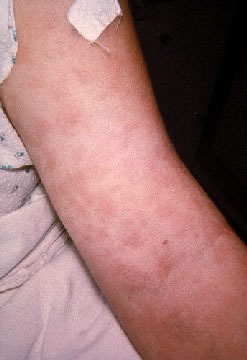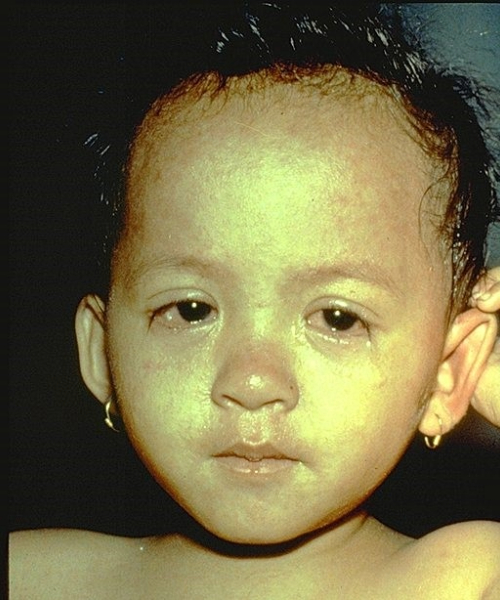Photos

Chickenpox on Abdomen
The Chickenpox rash can occur on all body surfaces. The rash is raised, red and itchy.
The rash is no longer contagious when all of the spots are crusted over and no new spots are appearing. This usually takes 7 days after the rash first appears.
Source: Self Care Decisions, LLC
Used with Permission from Schmitt Pediatric Guidelines LLC.

Penicillin Rash on the Arm
This patient had a widespread rash from an allergy to penicillin. The picture shows the arm.
Source: CDC PHIL
From the CDC's Public Health Image Library (http://phil.cdc.gov), ID#1268, in the public domain. Content Provider(s): CDC / Dr. Sellers.

Measles Rash on Back
This photo shows a child with measles.
Measles is a very contagious disease. It is caused by a virus. A red, blotchy rash appears around day 3 of the illness. It first appears on the face and then spreads to other areas.
Source: Licensed from Shutterstock. Photograph taken by Aleksandr Finch.
Self Care Decisions, LLC 2023-2024.

Measles - Later Stage
This photo shows a child with measles. The rash is likely in a later stage and starting to fade. Other visible symptoms are red, weepy eyes.
Measles is a very contagious disease. It is caused by a virus. It first appears on the face and then spreads to other areas.
Source: Used with permission Centers for Disease Control and Prevention.
From the CDC's Public Health Image Library.

Rocky mountain spotted fever
This child's right hand and wrist show the spotted rash of Rocky Mountain spotted fever.
Rocky Mountain spotted fever is caused by a bacteria. The disease is spread by ticks.
Source: CDC PHIL
From the CDC's Public Health Image Library (http://phil.cdc.gov), ID#1962, in the public domain.